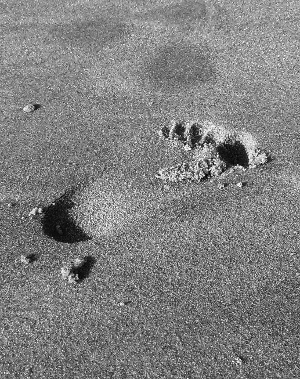New view of ancient prints
 A new analysis suggests more than one hominin species was walking on two legs around 3.6 million years ago.
A new analysis suggests more than one hominin species was walking on two legs around 3.6 million years ago.
A set of fossil footprints from Laetoli in northern Tanzania had previously been attributed to early relatives of modern humans, but new research suggests that another set of tracks belongs to an unidentified hominin.
The findings are an insight into the origins of bipedalism.
In the 1970s, five consecutive footprints discovered at the Laetoli site provided the earliest definitive evidence of bipedalism in hominins.
These prints were proposed to have been made by Australopithecus afarensis - the same species as the famous ‘Lucy’ skeleton.
Other footprints, discovered at the same time and subsequently covered over, prompted debate.
Some thought they were made by a bear walking on hind legs; others that they were left by a different kind of hominin.
The footprints were placed in such a way that the creature must have been placing each foot past the body's midline to touch down in front of the other foot.
Researchers from the US have since re-excavated these unusually shaped footprints.
The team compared them with prints made by bears, chimpanzees and humans, and found that they were more similar to those made by hominins than by bears.
Video analyses of wild American black bear behaviour reveals that the animal hardly ever walks on its hind legs.
The authors also note that, although thousands of animal fossils have been found at Laetoli, none are from bears. They conclude that the prints were left by an as-yet-unidentified hominin that walked with an unusual cross-stepping gait.
Each foot crosses over the body’s midline to touch down in front of the other foot.
These findings are part of a growing body of evidence that hints at an underappreciated diversity of hominins from this time period.







 Print
Print